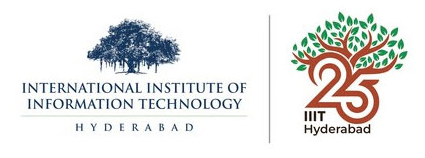

The IAStructE – IIIT Hyderabad student chapter of the Earthquake Engineering Research Centre organized an educational trip on 20thMarch 2024 to the CSIR-National Geophysical Research Institute (NGRI) Hyderabad. The postgraduate students, Ph.D. scholars, and research interns attended the trip. Firstly, the studentsvisited the ‘Seismological Observatory’ where Dr. Vijaya Raghavan (Chief Scientist, Earthquake Hazard Studies) and his team briefed about the historical significance of the observatory, followed by insights into terminologies surrounding earthquake research such as plate tectonics, seismograms, seismographs, earthquake alert systems, epicenter determination,etc.The students observedthe earthquake vault, where data concerning different earthquakes that have occurred in the past were stored either in the form of manual data logs or digitized forms. The students had the opportunity to see the seismograms and earthquake data.
Next, the students visited the ‘Groundwater Building’,where the introduction to Airborne Electromagnetics (AEMs), a technology that uses electromagnetic waves and Di-electric properties of materials to locate groundwater aquifers, was demonstrated. The students were given anintriguing demonstration of the Ground Penetrating Radar (GPR), a device widely applied for rapid and precise mapping of near-surface structures and is used for data collection for civil engineering, environmental, archaeological, and geological features. Dr. SakramGugulothu (Scientist, Geology, Remote Sensing, and GIS Group) led the demonstration. Further, the students en route to the‘Open Rock Museum’ to see different types of rocks with ages ranging from 3.3 billion years to around 55 million years of the earth’s history. Dr. E.V.S.S.K Babu (Chief Scientist, Geochronology and Isotope Studies) shared a glimpse intothe earth’s geological history, highlighting concepts of rock and mineral formations and India’s geological composition.
In addition, the students visited a few more labs like the Magnetotellurics (MT) Processing Lab, where Dr. Prasanta K. Patro (Chief Scientist, Magnetotellurics)briefed the students with concepts of electromagnetics, rock strata sensing, and frequency-based material identification. Dr. Anita Devi (Scientist, Magnetotellurics) demonstrated to the students how to measure the electrical resistivity of the sub-surface using variations of the earth’s magnetic and electric fields.Next came the Thermal Geophysics, Rock Mechanics, and Paleomagnetismlab, where the team of Dr. Venkateshwarlu M (Senior Principal Scientist), Dr. A.V. Satyakumar (Scientist), and Dr. Ramesh Babu N (Senior Technical Officer) explained about theearth’s magnetic field preserved in rocks. The teamdemonstrated cutting-edge devices used for their research, which included the Portable Spinning Magnetometer, AF & Thermal Demagnetizer, and Advanced Variable Field Translation Balance (AVFTB).
Finally, the tour concluded with a visit to the Thermal Conductivity Lab and Radioactivity Lab. Dr. Nishu Chopra (Scientist) gave insights into concepts such as Geothermal Gradient and steady and Transient Thermal Conductivity. Along with this, the equipment used to measure these parameters was also shown. In the Radioactivity Lab, the group was briefed on Gamma-Ray Spectrometry, which is used for geological mapping of rock alteration and concentration of radioactive elements. Overall, it was a joyful and learning experience.

Visitors Count